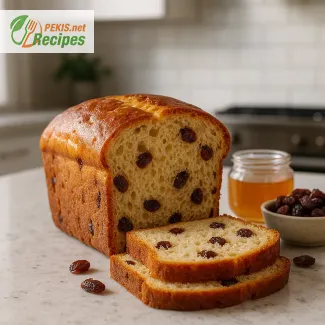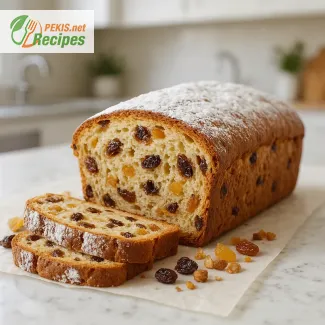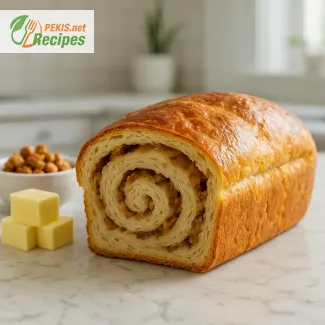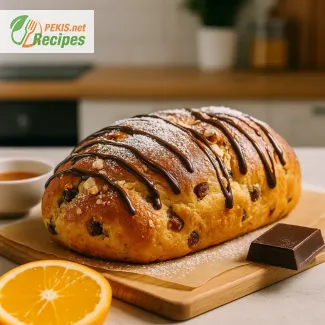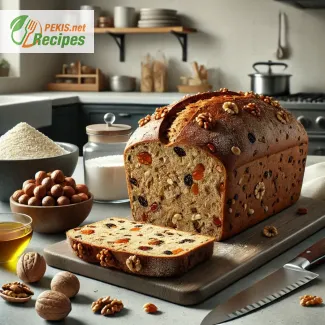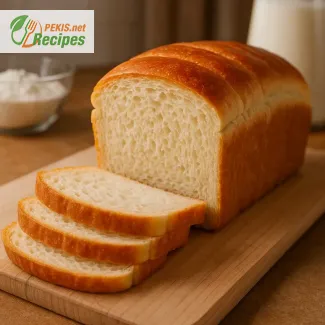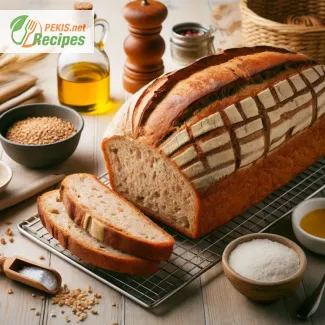
Baking whole wheat bread isn’t just a culinary endeavor; it’s a journey into the heart of wholesome goodness, packed with the richness of whole grains and a depth of flavor that’s both satisfying and nutritious. The process of making whole wheat bread at home is about achieving that perfect balance between texture, taste, and nutritional value, which can transform an ordinary loaf into something truly exceptional. For those aspiring to bake whole wheat bread like a professional, mastering a few essential techniques will elevate each loaf into a showcase of skill, care, and dedication.
Whole wheat bread has gained immense popularity due to its health benefits and rich, hearty flavor. It’s a great source of fiber, vitamins, and minerals, all of which contribute to a balanced diet and promote well-being. When you bake with whole grain flour, you’re using flour that retains all parts of the grain—the bran, germ, and endosperm. This keeps essential nutrients intact, resulting in a loaf that’s higher in protein, fiber, and antioxidants compared to refined white bread.
The Essentials for Baking a Nutritious Loaf
To make a perfect whole wheat bread, start by selecting high-quality whole wheat flour. This type of flour is different from all-purpose or white flour in that it absorbs more water, giving the bread its characteristic dense yet fluffy crumb. Knowing how to handle this flour’s unique texture is crucial; it has a different structure and demands more moisture and often longer proofing times. Achieving the right hydration and understanding how to develop gluten in a whole wheat dough will ensure a soft, airy texture with a subtle, nutty flavor.
The Role of Hydration and Kneading
Hydration is key. Since whole wheat flour contains the entire grain, it requires more water to properly absorb and form gluten. A common mistake is under-hydrating the dough, which can lead to a dry and crumbly loaf. A professional technique involves slowly incorporating water and allowing the flour to absorb it over time through autolyse, where the flour and water rest before adding the yeast and salt. This enhances gluten development and makes the dough easier to knead. Kneading is another crucial step in bread-making. It helps in building the gluten structure, which in turn gives your loaf a springy, chewy texture—hallmarks of a well-made bread.
Proofing and Rising: The Secret to Texture
One of the key differences between home-baked and professionally baked bread lies in the proofing stage. Whole wheat bread benefits from a slightly longer proofing time, which allows the gluten structure to relax and expand. This results in a loaf that’s both dense and tender, with a well-developed crumb. An essential tip for home bakers is to avoid over-proofing, as it can cause the bread to collapse during baking. Instead, aim for a dough that has doubled in size but still retains some elasticity. A second proofing period, or “final rise,” ensures an even crumb structure and a well-rounded flavor profile.
Baking and Enhancing Flavor
Baking the bread at the correct temperature is essential for achieving a crispy crust and a soft, flavorful interior. For the best results, start with a hot oven preheated to around 220°C (425°F). This initial heat will allow the dough to “spring” or expand, creating an airy texture. As the bread bakes, the crust becomes caramelized, giving a rich, golden color and a slight nutty aroma. A simple trick used by professional bakers is to introduce steam into the oven during the first few minutes of baking. This can be achieved by placing a pan of hot water on the oven’s bottom rack or by misting the oven walls. Steam creates a beautiful, crackling crust and helps the bread expand fully.
Enjoying and Storing Your Whole Wheat Bread
Once you’ve baked your bread to a perfect golden-brown hue, resist the temptation to slice it immediately. Letting the bread cool for at least an hour allows the crumb to set and the flavors to meld. Freshly baked whole wheat bread pairs beautifully with natural butters, jams, or simply a drizzle of olive oil, enhancing its nutty, wholesome flavor. Proper storage is also key to enjoying your loaf for days—wrap it in a clean kitchen towel or store it in a bread box to keep it fresh and prevent it from drying out.
In mastering the art of whole wheat bread, you’re not just baking—you’re cultivating a skill that brings satisfaction and nourishment with every loaf. Baking this nutritious and flavorful bread at home will not only fill your kitchen with comforting aromas but also offer a taste that’s far richer and more wholesome than any store-bought alternative.
- Prepare the Dough: In a mixing bowl, dissolve the yeast in warm water (approximately 40°C/104°F). Add honey or sugar and let it sit for 5 minutes to activate the yeast.
- Mix Ingredients: Add salt and olive oil to the yeast mixture. Gradually add whole wheat flour, stirring continuously until the dough starts to come together.
- Knead the Dough: Turn the dough onto a floured surface. Knead for 8-10 minutes until the dough becomes smooth and elastic. Add small amounts of flour as needed.
- First Rise: Place the dough in an oiled bowl, cover with a damp cloth, and let it rise in a warm place for 1 hour or until doubled in size.
- Shape the Dough: Once risen, punch down the dough and turn it onto a floured surface. Shape it into a loaf and place it in a greased loaf pan.
- Second Rise: Cover the dough and let it rise again for about 30-45 minutes, until it fills the pan.
- Preheat and Bake: Preheat the oven to 220°C (425°F). Place the loaf in the oven and bake for 30-35 minutes until golden brown. A hollow sound when tapped on the bottom indicates it’s done.
- Cool and Serve: Remove from oven and let cool on a wire rack before slicing.
Creating a delicious and nutritious loaf of whole wheat bread offers flexibility and personalization to suit various preferences and dietary needs. Here’s a comprehensive guide on how to influence the recipe for whole wheat bread to adjust texture, taste, and nutritional profile or address dietary restrictions. Whether you're aiming for a lighter loaf, increasing fiber, adding flavor complexity, or making it allergy-friendly, there are several ways to adapt the recipe.
1. Texture Adjustments
Whole wheat bread is often denser than white bread due to the bran and germ in the flour. Here are methods to lighten or modify the texture:
- Increase Hydration: Whole wheat flour absorbs more water than white flour. If the dough feels too stiff or dry, try increasing water by increments of 15-30 ml (1-2 tbsp). This extra hydration can improve gluten development and create a softer, more airy texture.
- Add Vital Wheat Gluten: For a more elastic and lighter crumb, adding 5-10 g (1-2 tsp) of vital wheat gluten can help strengthen the dough’s structure, leading to a softer texture similar to that of white bread.
- Use a Preferment: A preferment (a small portion of dough prepared the day before) can add depth of flavor and enhance texture. Mixing a portion of the flour and water with a pinch of yeast and letting it ferment for 12-24 hours helps increase both rise and flavor.
- Extend Proofing Times: Extending proofing time for whole wheat dough, especially during the first rise, allows the natural enzymes to break down the bran, enhancing elasticity and creating a fluffier bread. Be cautious not to over-proof, as this can lead to a collapsed loaf.
2. Flavor Enhancements
The natural nuttiness of whole wheat flour offers an ideal base for a variety of flavors. Consider the following tips to enrich the taste:
- Incorporate Honey or Maple Syrup: While honey is already in the original recipe, increasing it by 10-20 ml (1-2 tsp) or substituting it with maple syrup gives a slight sweetness that complements the earthy whole wheat flavor.
- Use Specialty Salts: Try a pinch of sea salt or Himalayan pink salt for a subtle mineral flavor that enhances the bread’s taste profile.
- Add Seeds and Grains: Mixing in seeds like flax, sesame, or chia (approximately 20-30 g or 1-2 tbsp) boosts nutrition and adds crunch. You could also experiment with grains like rolled oats or quinoa for added texture.
- Introduce Spices or Herbs: Whole wheat bread pairs beautifully with spices like cinnamon or herbs like rosemary and thyme. Add 1-2 g (1/2 tsp) to impart a unique aroma and flavor.
3. Enhancing Nutritional Value
For those seeking even greater nutritional benefits, there are several ways to enrich this whole wheat bread recipe:
- Add Oats for More Fiber: Mixing in 20-30 g (1/4 cup) of rolled oats or oat bran increases fiber content and gives the bread a hearty, rustic texture. Be mindful that oats may absorb moisture, so increase water slightly if needed.
- Incorporate Nuts and Seeds: Including nuts like chopped walnuts, almonds, or seeds such as sunflower or pumpkin seeds boosts the bread's healthy fats, protein, and mineral content. Around 30-50 g (1/4 cup) of these mix-ins will add nutrition and a satisfying crunch.
- Substitute Some Water with Milk or Yogurt: For extra protein and a softer crumb, replace up to half the water with milk or even yogurt. This swap also adds calcium and can improve the bread’s browning during baking.
4. Allergy-Friendly and Gluten-Free Alternatives
For those with gluten or other sensitivities, here’s how to modify the recipe without compromising flavor or texture:
- Replace Whole Wheat Flour: Substitute a high-quality gluten-free flour blend. Whole grain gluten-free blends, which may include ingredients like buckwheat, quinoa, and sorghum, mimic the texture of whole wheat while remaining gluten-free. Add a gluten-free stabilizer, like xanthan gum (around 5 g or 1 tsp per 500 g of flour), to improve the dough’s elasticity.
- Use Dairy-Free Milk: If using milk instead of water, as mentioned above, ensure it’s non-dairy (like almond, soy, or oat milk) if lactose is a concern. These plant-based milks can also add a subtle flavor that complements the whole wheat.
- Egg-Free Binding Options: While this bread doesn’t require eggs, those wishing to add more binding or moisture can consider alternatives like applesauce or flaxseed meal mixed with water (1 tbsp of flaxseed meal with 3 tbsp water) for a vegan-friendly option.
5. Improving the Crust
The crust is often one of the most desirable aspects of whole wheat bread. Here’s how to achieve that beautiful, professional crust:
- Steam: Placing a pan of water on the bottom oven rack, or misting the bread during the first 10 minutes of baking, creates steam that allows the dough to expand and develop a crispy, crackly crust.
- Brush with Olive Oil: For an extra golden crust, brush the loaf lightly with olive oil before baking. This adds a slight sheen and a hint of flavor.
- Sprinkle with Toppings: Dusting the top with seeds like sesame or poppy before baking enhances both appearance and flavor. Alternatively, sprinkling oats or a bit of whole wheat flour creates a rustic look.
6. Storage and Shelf Life Tips
Once baked, there are several ways to preserve the freshness and texture of your whole wheat bread:
- Wrap and Freeze: For longer storage, slice the bread and freeze individual portions. Wrap each slice in parchment paper, then place in a freezer bag. To enjoy, thaw at room temperature or reheat in the oven.
- Reheat for Freshness: Whole wheat bread can slightly dry out over time. Refresh it by toasting or warming briefly in the oven, which restores some of its moisture and flavor.
- Store Properly: Storing bread in a bread box or wrapping it in a kitchen towel helps keep the crust crisp while preventing the bread from drying out quickly.
7. Final Tips for Bread Baking Success
To achieve consistent and professional-quality whole wheat bread, consider these additional tips:
- Use a Digital Scale for Accuracy: Measuring by weight (grams) rather than volume ensures precision, especially for flour, where slight differences can impact hydration and texture.
- Room Temperature Ingredients: Ensure that ingredients like water, yeast, and any milk used are at room temperature. Cold ingredients can slow yeast activation and impair rise.
- Experiment with Sourdough Starter: If you’re an experienced baker, try adding a small amount of sourdough starter to your whole wheat bread. This can improve both flavor and shelf life, adding complexity through natural fermentation.
Vitamins and Minerals – Enhancements and Benefits
Each adjustment influences the nutritional profile of the bread, as listed here:
- B Vitamins (Thiamine, Niacin): Adding nuts and seeds can increase levels of B vitamins, which support energy and metabolism.
- Magnesium and Calcium: Using dairy milk, nuts, or seeds raises the mineral content, promoting healthy bones and muscles.
- Iron: Whole wheat and seeds like sesame boost iron, vital for oxygen transport.
- Fiber: Adding oats or extra seeds can further raise fiber levels, which aid digestion and blood sugar regulation.
Antioxidants – Enhancements and Health Impacts
Whole wheat bread contains antioxidants, especially when you enhance it with nutrient-dense ingredients:
- Vitamin E: Found in seeds like sunflower or added nuts, Vitamin E protects cells and improves skin health.
- Selenium: Whole wheat naturally contains selenium, which supports immunity and cellular health.
- Phenolic Compounds: These compounds in whole wheat offer anti-inflammatory benefits, supporting cardiovascular health.
In conclusion, with these adjustments and additions, you can elevate your whole wheat bread to suit specific health goals, flavors, and dietary needs. From creating a softer crumb to adding nutrient-rich seeds, each modification can make the loaf not only tastier but also more aligned with individual preferences and wellness goals.
- Contains: Gluten (whole wheat flour).
- Alternative for Gluten-Free Option: Replace with a gluten-free whole grain flour blend and a gluten-free stabilizer like xanthan gum.
- Vitamin B1 (Thiamine): Supports metabolism and energy production.
- Vitamin B3 (Niacin): Aids in maintaining healthy skin and nerves.
- Iron: Important for oxygen transport in the blood.
- Magnesium: Essential for muscle function and bone health.
- Selenium: Boosts immune function and prevents cell damage.
- Phenolic Compounds: Offer protection against oxidative stress and inflammation.
